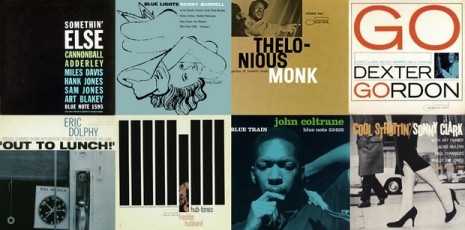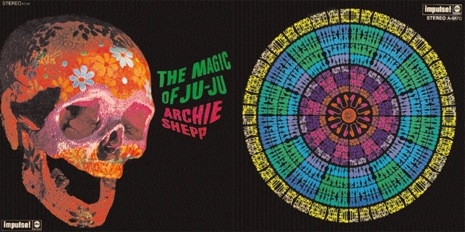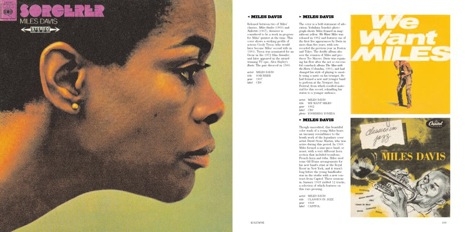
Now in its 80th year of operation, it would be difficult to quantify exactly how influential the Blue Note Records label has been in popular culture. Blue Note, obviously, is synonymous with jazz music in all of its many forms—the label began with traditional and small group jazz, but moved to the “hard bop” sound in the 1950s, and later towards more modern and avant garde jazz—but beyond that, the label’s album covers are known for being basically a school unto itself in terms of their utterly distinctive graphic design (done by Reid Miles) and exciting portrait photography (mostly shot by longtime Blue Note financial exec Francis Wolff). Blue Note’s signature packaging defined for all time what jazz looks like.
And not only that, but aside from James Brown, it was samples from Blue Note artists that built the foundations of hip-hop. A Tribe Called Quest, Public Enemy, Dr. Dre, Tupac Shakur, Ice-T, Busta Rhymes, Ice Cube, De La Soul, and the Beastie Boys all found inspiration in Blue Note grooves. While many labels were busy suing the first generation of hip-hop artists into penury, longtime Blue Note president Bruce Lundvall was inviting them to plunder the goods. Flash forward thirty years later and the likes of Flying Lotus, Mad Lib, Kendrick Lamar, Kanye West and J Cole are still digging deep in the crates marked Blue Note.
The Blue Note name strongly represents quality. Very high quality. Quality music, quality records and top quality presentation of this music to the consumer. No other record label in history has been as consistent as Blue Note has been in terms of sticking to the founding fathers’ vision and ethos for turning out high quality products, and long after they were gone, too. In short, Blue Note Records was, and always has been, a label operated first and foremost by music fans for other music fans and the imprint’s reputation for quality is something deeply inherent in the multi-generational appeal that Blue Note has. They put out stuff they want to hear.
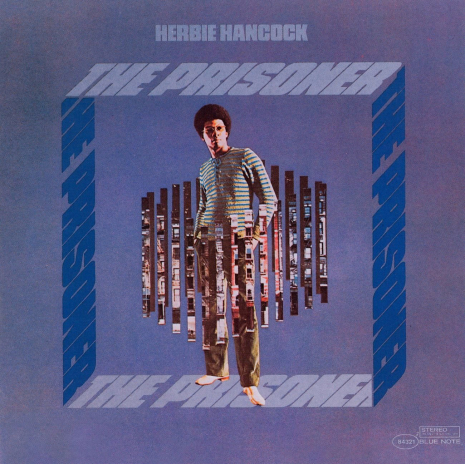
Alfred Lion, one of Blue Note’s cofounders—the other was Communist political activist Max Margulis, but he was more of a funder—was inspired to start the label after attending John Hammond’s famous “From Spirituals to Swing” concert at New York’s Carnegie Hall in 1938, where he would have heard the likes of the Count Basie Orchestra, “Big Joe” Turner, Sister Rosetta Tharpe, boogie woogie pianist Albert Ammons and many other black artists. Starting a record label would not have been seen as a safe—or particularly smart—career move in 1939. There was precious little retail infrastructure at the time, so distribution was difficult. It simply was not a business that anyone—not back then at least—would have wanted to have gotten involved with. Unless you weren’t doing it for the money, but for the love of the music. Alfred Lion clearly felt a calling to help birth, nurture and archive what would become one of the dominant art forms of the 20th century and beyond. He’s a pivotal character in the history of jazz. Imagine for a moment that this man was never born. And that Blue Note never existed.

While Alfred Lion’s direct and indirect influence on culture worldwide is incalculable, there’s another less obvious way that his legacy is still having an effect: Blue Note was one of the first “audiophile” record labels, even before that term entered common usage. Blue Note sessions were recorded in some of the finest studios by some of the best producers and engineers (like the legendary Rudy Van Gelder) and the albums the label released not only looked amazing, they sounded great, too. With the post WWII economic boom and the concurrent craze for “hi fi” stereo gear, the higher quality Blue Note pressings held special allure for record collectors for the simple reason that they were of a consistently greater value (on every level) than what was on offer elsewhere. In that department, Blue Note set the standards. All of ‘em. [I often say something along the lines of how a certain unexpected album “got the Blue Note treatment” and everyone always knows exactly what I mean when I say that.]
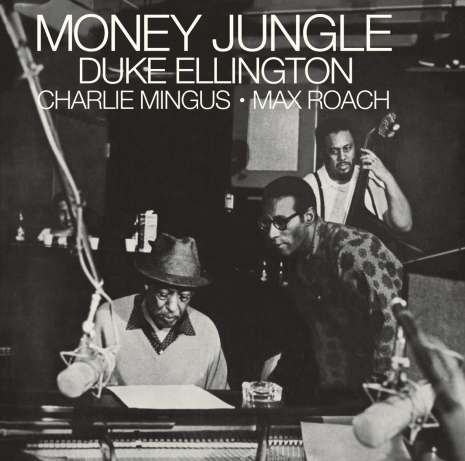
Which brings me to some recent and upcoming Blue Note projects that I think you should know about, namely the deluxe releases in the Tone Poet Audiophile Vinyl Reissue Series launched earlier this year. The Tone Poet series is produced by sonic guru Joe Harley (he is the “tone poet”) and features all-analog, 180g audiophile vinyl reissues that are mastered from the original master tapes by Kevin Gray of Cohearent Audio (one of the best in the business, when you see his name, go for it). The Tone Poet vinyl is manufactured by RTI in Camarillo, California, and packaged in what are known as Stoughton Printing “Old Style” Gatefold Tip-On Jackets. In other words, heavy duty, whisper-quiet wax and covers that are about as sturdy as hardback books. Jazz classics released in 2019 under the Tone Poet shingle—such as Wayne Shorter’s Etcetera, Dexter Gordon’s Clubhouse, Introducing Kenny Burrell and Donald Byrd’s Chant (among a few dozen other choice platters)—will be joined soon by Hank Mobley’s Poppin’, Stanley Turrentine’s Comin’ Your Way, Chet Baker Sings, Grant Green’s Nigeria, Money Jungle by Duke Ellington, Charles Mingus and Max Roach, and Herbie Hancock’s The Prisoner. And that’s only what’s coming out in the first quarter. And there are still dozens more in the Blue Note 80 series.
This has to be the most ambitious reissue series ever undertaken by a major label. These no compromise records sound great. They look great. They feel heavy in your hands. The quality is announced to you, Jack, before you even slap it on your turntable.
If any of this sounds good, you know what to do.
Blue Note Records president Don Was and “tone poet” Joe Harley show what goes into the Tone Poet Audiophile Vinyl Reissue Series.






